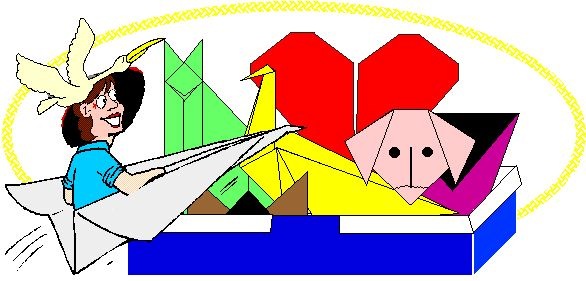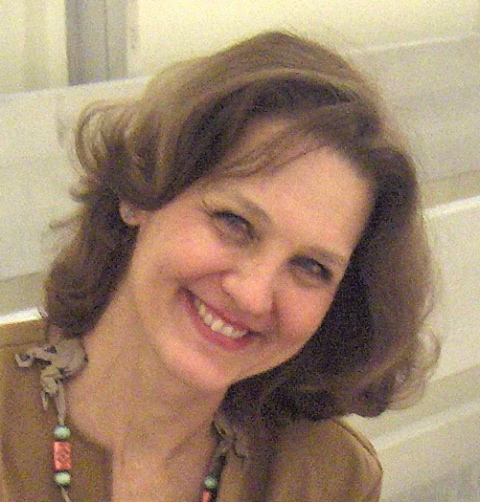
Christine Petrell Kallevig?

Christine Petrell Kallevig? |

1990 - present: Chistine is an author, professional storyteller, visiting author, and workshop presenter. Workshops focus on creative writing, the art and application of storytelling techniques in various professional and educational settings, and how to use of the arts as a tool to achieve educational goals. Author visits are hands-on, interactive performances of origami stories. 3-D origami experiential illustration and information about creative writing and mathematical concepts inherent in origami are always included. Details and references of recent presentations and appearances are available upon request. Published books with links to Amazon:
DVD’s:
Short Story Anthology, 2025: Oh My Goddess by Christine Petrell Kallevig is set in a fictional Finnish-American village along Lake Erie. The story features a transformational encounter between siblings Elea and Heikki with Vellamo, the water goddess portrayed in Finnish mythology.
Purchase here.
Before 1990: Christine worked as a teacher of intellectually gifted children, grades 5 - 8, and as a resource teacher for learning disabled and behaviorally disordered children, grades K - 5. She was also employed as a Registered Music Therapist at a children’s center for grades K-10 and at a Psychiatric Institute as a member of the activities therapy team serving teenagers and adults.
Education and Professional Memberships:
Copyright 2025 by Christine Petrell Kallevig
1991
1992
1993
1993
2001
2003
2009
2014
2006
2006
Dreams and Driftwood: Stories Set Along the Great Lakes is an anthology of short stories by the Great Lakes Fiction Writers Group, exploring the mysteries, wonders, and complexities of life in the Great Lakes region. From haunted castles and mythical goddesses to unlikely romances and second chances, these stories delve into the depths of human experience, revealing the resilience, humor, and enduring power of love in unexpected places.
Q. Recently, I came across your website. I love the idea of combining origami with children's stories for an educational presentation! When did you first become interested in origami?
A. Origami came into my life after I had already written two novels, several short stories, and had been a teacher for several years. From my very first contact with origami, I saw the progressive folding steps as a way to illustrate story events, settings, or characters. I taught myself simple traditional models and wrote short stories that were illustrated by the shapes formed by the sequential folds. I wanted to take the Storigami technique beyond a teaching tale, so the stories themselves needed developed plots, interesting characters, and ironic resolutions. Who knew there would be so much interest in Storigami? My first collection of nine stories, Folding Stories: Storytelling and Origami Together As One, was published in 1991. After it received a favorable review in School Library Journal, the book began to sell like crazy. Suddenly I was invited to speak in schools and libraries nationwide. Two decades and four more Storigami collections later, I'm still presenting programs in schools and libraries as a professional storyteller and visiting author.
Q. What is your favorite type of model to fold?
A. I love to give origami models to the schools I visit, so I fold a lot of mascots, like eagles, panthers, and bulldogs. I often pose them on Sonobe modular models that I've folded in school colors. The children and staff seem to enjoy the personalized origami models and display them after my visit. I also use large origami puppets during my presentations, so I fold a lot of farm animals, pets, sea creatures, and birds.
Q. What is your favorite origami book or website?
A. I’m a huge fan of John Montroll's elegant illustrations and instructions. I especially appreciate how he heads off potential pitfalls with thoughtfully placed pre-folds. Many of my origami puppets are his designs, so I'm always holding up his books and singing his praises.
Q. What is your favorite type of material to fold?
A. I experiment with a variety of folding materials, especially anything that comes in large sizes. Because I travel so much and present to so many children, I need sturdy models that tolerate rough handling and constant packing and unpacking. I've had good luck with wallpaper, freezer wrap, cotton fabric, and poster board.
Q. What tips would you give to someone who is just learning how to fold origami models?
A. Some new folders are frozen by perfectionism. Fear of making mistakes leads to feeling overwhelmed, so it's helpful for new folders to understand the difference between precision and perfection. I encourage new folders to illustrate stories with me in large groups ranging from 200-700 students. I hold up an oversized piece of paper and fold as I tell a story. They do what I do. I tell them ahead of time that if they feel mixed up, they should not worry about it, stop folding, and just listen to the story. I assure them that if they watch as I fold the paper, they can try again later when they're not around hundreds of people. The stories help them relax, and because the folding steps are paired with the story events, remembering the story helps them remember how to fold the model. Even though I've been teaching origami like this for over twenty years, it's still magical when the story ends and the audience murmurs, "Ahhhhh," as they happily hold up their cups or hearts.
Q. During a typical week, how much time do you devote to practicing origami?
A. I rarely fold for fun anymore. During the school year, my busiest travel season, everything I fold is needed for successful presentations. I work many hours cutting paper, preparing mascot gifts, and refolding damaged origami props. When I'm not visiting schools or presenting programs, I create new origami stories. I'm completely self-employed as the folding story lady. It's a wonderful job!
Q. In your opinion, what is the relationship between origami as an art form and the scientific/mathematical implications of paper folding?
A. Because I work primarily with children, the mathematical concepts I point out are very basic, like symmetry, bisection, angles, and shape identification. Teachers appreciate my frequent use of the mathematical vocabulary that's included in annual achievement tests.
Q. Is there any other special information you'd like to share with the readers of About Origami?
A. It would be so fun to meet other readers! Please visit my website and check out my travel calendar. I'd love to visit schools in your area!
Q. In addition to my role as the About Origami guide, I am also a blogger for a site called Smart Mom Picks that does product reviews. Are any of your books available for the general public to buy? If so, I'd love to do a review for the readers of Smart Mom Picks in addition to this About Origami interview. Thanks! Dana Hinders. *posted 2013 thru 2016 on About.com
Copyright 2013 by Dana Hinders